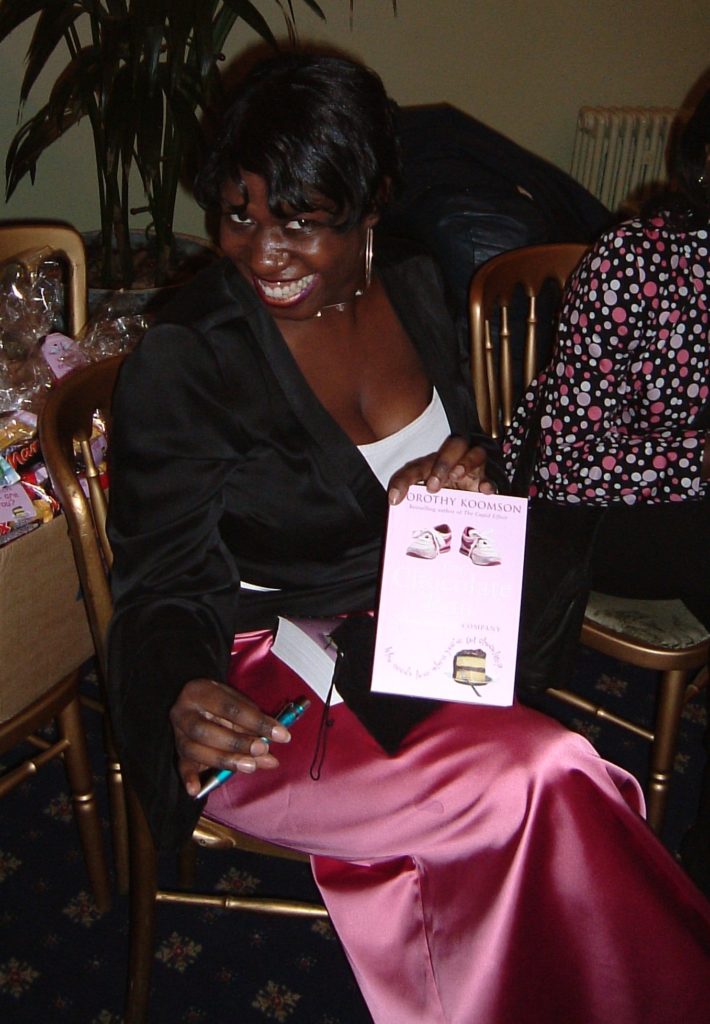

Way back in 2007, I attended a library talk in Birmingham. It was a great event and I met some really nice people (as I did on all the library talks/events I participated in).
I remember, though, the lovely librarian at that particular event said to me when she met me, ‘I picked out my outfit for today very carefully because I know how much you’re into fashion. You will have already noted what I’m wearing.’ I was a bit taken aback to be honest that she thought, because I regularly describe clothes in my books, I must be a dedicated follower of fashion.
The truth is, I am and I am not.
I am in the sense that when I write about a character in a book, I try to describe the clothes they wear with detail and accuracy. I am not in the sense that given the choice between an expensive skirt and its monetary equivalent in books, the books would win – hands down.
I’m not a huge fan of shopping, either. I like the idea of it, and I regularly think that I need new jeans, new shoes, a new winter coat – especially as I have a tendency to wear my clothes until they are threadbare (those who love me have been known to re-gift said items in the bin). But the reality of shopping is altogether different from the fantasy. I like the seeing the clothes part; I despise the trying it on part. Individual cubicles are bad enough, but communal changing rooms are a horror that take me back to school locker rooms and the trauma of stripping off in front of a load of girls you barely know. So, I have once or twice – cough almost always cough – bought things without even turning in the direction of the changing room.
If I do brave the changing area, it is done in the manner of woman about to go into battle. I brace myself, unsure whether this shop will tell me with its little cardboard rectangle not only if I can afford said item but if I am a size twelve, fourteen or sixteen. I will prepare myself for either feeling that familiar tug of not being able to get the zip to close on one item, while swimming around in the next size up (in Australia I actually found a brand of jeans that had size 13 – which fit!). I will steel myself to look in the mirror and think, ‘Yes, I remember now, I am not a shop mannequin, and I am not the girl in the photo wearing this – this thing should not be on my body.’
Sometimes, my dressing room angst is compounded by the (un)kindness of strangers and shop assistants. I remember dashing into a big London chain store looking for a dress for an event that evening – another Dorothy speciality is finding something to wear minutes before the do – and grabbing a dress I liked off the rails and dashing for the changing room. It was one of those places where you have to leave the cubicle to look at the mirror outside. I was flustered so didn’t have time to brace myself before I whipped aside the curtain and stepped out.
The shop assistant, who was helping someone else looked me over and then said, ‘You actually don’t look that bad. When you picked up that dress I thought NO WAY, not at your age and with your shape. You’ve actually got quite thin legs, haven’t you?’ I was so taken aback, I could only smile vaguely at her before returning to my cubicle – she was lucky not to find herself wearing the wrong end of a verbal dressing down.
So, it’s pretty clear I do not follow every – or even any – fashion trend, which, of course, begs the question: why do I always mention the clothes the characters are wearing in my books? Because clothes maketh the person.
Clothes, how a person chooses to dress, says more about them than their hair or eye colour, their body shape or their place of birth, in a story. Clothes are often one of the first ways that people ‘experience’ us. How they see us and how they start to formulate ideas – rightly or wrongly – about who we are. This is especially true of written fictional characters. For example, if I described a woman going to a café for breakfast, you’d think she was just another ordinary person going about her business, but if I were to say she went to that café wearing a tiara, pink feather slippers and a red silk dressing gown, I’m pretty sure you’d start to wonder who this person is and why she is dressed like that.
It’s a simple device, but an effective one – and one I love to explore. When I am creating a character, I not only think about what they do, what colour their eyes are, and where they live, but also what they wear. What they say to the world with their sartorial selections; how they go into every different situation armed with what they see as an appropriate item of clothing. Just changing someone’s top from a low-cut v-neck to thick poloneck with a few keystrokes can change them from a vamp to a prude. I love it. It’s truly satisfying to know that simply describing a few pieces of clothing can add that extra depth to a character in my mind and on the page.
Some people don’t like to constantly read these descriptions in my books, but many, many more people tell me they do. And, to be honest, I absolutely love to write them. Because, for me, being able to put together an appropriate outfit for a person on the page, saves me from having to think too deeply about doing it in real life.
© Dorothy Koomson 2009


